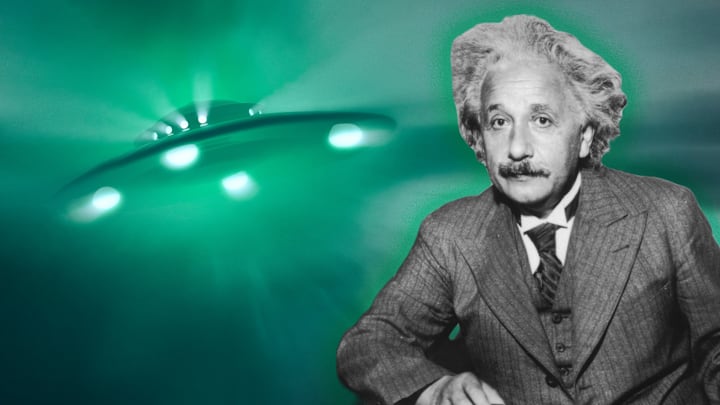On the evening of July 19, 1952, a bizarre incident occurred in the skies over Washington, D.C., that would last into the early morning hours of July 20.
Air traffic controllers watched as objects materialized on their radar screens and flew over the White House and the Capitol—air space that was restricted. “It was very erratic. It went left and right,” one of the air traffic controllers would later say. “We knew it wasn’t an airplane, because a plane flies in one direction. But it was a strong signal, just like an airplane.” A Capital Airlines pilot reported seeing six fast-moving lights that had “no tail, no recognizable shape … just bright lights against a dark sky” over the course of 14 minutes. Air Force radar also picked up the objects, whatever they were, but they vanished just as fast as they were spotted. Scrambled jets sent to investigate found nothing.
At that point, UFOs were a hot topic in the U.S., thanks in part to an article that had appeared in an April 1952 issue of LIFE magazine called “Have We Visitors From Space?” What was happening in D.C. would prove to be “the climax of the 1952 flap,” Curtis Peebles wrote in Watch the Skies!: A Chronicle of the UFO Myth, and kicked flying saucer obsession into high gear. “Unidentified flying objects exploded into the public consciousness then,” Mark Rodeghier, scientific director for the Center for UFO Studies, told The New York Times in 2018. “There was concern in a way you hadn’t seen before.”
The press went wild. “SAUCERS SWARM OVER CAPITAL,” screamed just one headline about the incident, which made news around the country—and the world.
Perhaps these headlines were what inspired evangelical minister Reverend Louis A. Gardner to write physicist Albert Einstein asking for his opinion on flying saucers. Did he believe saucers came from space—specifically Mars or Venus, Gardner wondered? Or were UFOs some kind of military technology experiments created by the U.S. Air Force … or America’s foes?
At this point in his career, Einstein was one of the most renowned scientists in the world. He’d released his theory of general relativity, nabbed the Nobel Prize for Physics, spoken out against racism in America, and urged former president Franklin Delano Roosevelt to pursue nuclear research, influencing the creation of the Manhattan Project (a fact he would come to regret). And he was still performing research at Princeton University’s Institute for Advanced Study, even though he had technically retired in 1945.
Einstein was famous, and busy—so one could have forgiven him for if he had chosen not to reply to Gardner’s query. But he did reply, on July 23, 1952, writing on letterhead from the Institute for Advanced Study.

“Dear Sir,” Einstein wrote. “Those people have seen something. What it is I do not know and am not curious to know. Sincerely yours, Albert Einstein.”
It’s an interesting response from a man who typically championed curiosity. “The important thing is not to stop questioning. Curiosity has its own reason for existing,” he once said. In fact, just a few months before Gardner wrote to him, Einstein told his biographer, “I have no special talents. I am only passionately curious.”
Whatever his reasons for not being curious about what, exactly, people were seeing in the skies across America, Einstein’s succinct response to Gardner made news around the U.S. (Some of the stories even featured photos of a giddy Gardner holding the letter.) “Saucers not Einstein’s Dish,” one paper punnily headlined a piece about the letter. “Curious About Sky Disks? Not ‘The Brain,’” read another.

Also making the news? More UFOs over D.C., which appeared in the sky on July 26 and 27. Radar spotted as many as 14 objects in the sky. One sergeant at Andrews Air Force Base saw “a bluish white light move … at an incredible rate of speed. … These lights did not have the characteristics of shooting stars. There was no trails and [they] seemed to go out rather than disappear, and traveled faster than any shooting star I have ever seen.”
The Air Force received a record-breaking 500 reports of UFOs that month. They denied that what had been seen was any craft of theirs, and ultimately blamed what had happened (which would come to be known as “the Washington Invasion”) on the weather and meteors—but true believers, and those who had seen the phenomena themselves, weren’t convinced.
